Rheumatoid Arthritis is a chronic systemic disease characterized by inflammatory changes in joints and related structures that results in crippling deformities. Diseases primarily affecting the synovium and adjacent tissues.
Rheumatoid arthritis is a chronic systemic inflammatory disorder that may affect many tissues and organs, but principally attacks the joints producing an inflammatory synovitis that often progresses to destruction of the articular cartilage and ankylosis of the joints. Rheumatoid arthritis can also produce diffuse inflammation in the lungs, pericardium, pleura, and sclera, and also nodular lesions, most common in subcutaneous tissue under the skin. Although the cause of rheumatoid arthritis is unknown, autoimmunity plays a pivotal role in its chronicity and progression.
Cause of Rheumatoid Arthritis
– Exact cause is not known.
– Evidence points to autoimmune etiology.
– Genetic predisposition common.
– Precipitating factors:
— Physical or emotional stress.
— After childbirth (remission during pregnancy)
– Hormonal disturbance:
— Puberty.
— Menopause.
– Age: 20 – 45 years
– Sex: common in females.
Pathogenesis: Joint deformity occurs in RA because the cartilage & then the bone is eroded by the proliferative synovial tissue. This process leads to increased laxity of ligaments around the joints, subluxation of tendons & subsequently of joints & inflammation of many other tissues in the body.
Clinical features of Rheumatoid Arthritis
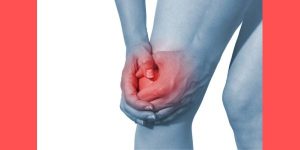
Prodorme
– Fatigue.
– Malaise.
Symptoms
– Joint stiffness more marked in morning.
– Pain in joints
– Limitation of movement of joints.
– Fever.
– Malaise.
– Night sweats.
– Loss of grip strength.
– Weight loss.
– Joint deformities.
Signs
– Joints involved:
— Small joints.
— Bilaterally symmetrical.
— Joints swollen, hot & tender.
— Limitation of movements.– Subcutaneous rheumatoid nodules present on extensor surfaces.
– Bursitis.
– Tenosynovitis.
– Muscle wasting above & below affected joints.
– Ulnar deviation of wrist.
– Swan neck deformity of fingers.
– Boutonniere deformity of fingers.
– Z-thumb deformity.
– Tender prominent metatarsal heads with secondary corns.
– Lateral deviation & over-riding of toes with pressure sores.
– Baker’s cyst: – Herniation of synovial cavity into back of knee causing pain & tenderness of calf.
Extra-articular manifestations
- Skin: rheumatoid nodules (common); non-tender, firm, subcutaneous lumps
- Lungs: affects particularly the parenchyma and pleura
- Endocrine and exocrine glands: secondary Sjögren syndrome
- Hematological: anemia of chronic disease
- Tenosynovitis and bursitis
- Carpal tunnel syndrome
- Atrophy of thenar muscles → difficulty making a fist; inability to oppose the thumb
- Heart: pericarditis and myocarditis; higher risk of myocardial infarction, stroke, and CHF
- Vascular: peripheral vasculitis manifesting as livedo reticularis, Raynaud phenomenon, purpura, necrosing fingertips or rheumatoid neuropathy
Specific symptoms of rheumatoid arthritis
- Morning stiffness in and around joints, lasting more than 1 hour
- Arthritis of 3 or more joints areas involved simultaneously
- Arthritis of at least 1 area in a wrist, metacarpophalangeal, or proximal interphalangeal joint
- Symmetric arthritis involving the same joint areas
- Rheumatoid nodules
- Positive rheumatoid factor
- Radiographic changes typical of rheumatoid arthritis on hand and wrist radiographs, including erosions, or unequivocal bony decalcification in or adjacent to the involved joints
- No evidence of other disease such as lupus
Diagnosis of Rheumatoid Arthritis
Immunological tests– (a) rheumatoid factor – RF is an antibody directed against the Fc segment of immunoglobin G (IgG).
Tests for inflammation – raised ESR, C-reactive protein and plasma viscoty. Other laboratory tests to support inflammatory disease – normochromic, normocytic anemia(with low iron levels and iron-binding capacity0, thrombocytosis, elevated hepatic alkaline phasphatase, polyclonal gammopathy, and elevation of acute phase proteins e.g. ferritin
Radiology – sequence of changes – (a) periarticular osteopenia with soft tissue swelling
(b) erosions at joint, margins, at junction of synovium, subchondral bone and articular cartilage.
© loss of joint space
(d) deformity such as subluxation or complete dislocation of affected joints.
Special investigations
Synovial biopsy – rheumatoid pattern (villus formation with thickening of synovial layer and Infilteration with abnormal sells) in rheumatoid arthritis
Synovial fluid – not helpful in different diagnosis from other types of inflammatory arthritis
Arthroscopy – will not distinguish rheumatoid arthritis from various inflammatory seronegative arthritides. In acute rheumatoid arthritis synovium is edematous, diffusely erythematous and friable. In more chronic conditions, it becomes thickened, polypoid.
Renal biopsy – if rediced glomerular or tubular function
Pulmonary biopsy – to distinguish rheumatic nodules from carcinoma or to establish diagnosis of fibrosing alveolitis.
Complications of Rheumatoid Arthritis
– Subluxation of atlanto-axial joint.
– Carpal tunnel syndrome.
– Fibrosing alveolitis.
– Sjogren’s syndrome.
– Septic arthritis.
Management of Rheumatoid Arthritis
– Bed rest.
– Well balanced, high protein, easily digestible diet.
– Local rest to joints with splints (to prevent deformity)
– Physiotherapy to avoid contractures.
– Local infra-red radiation or short wave diathermy for relaxation of muscles & relief of pain.
Homeopathic Treatment for Rheumatoid Arthritis
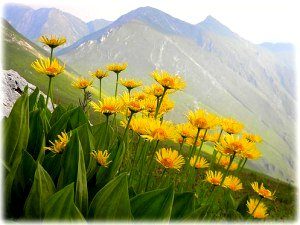
Repertory – Synthesis
Rubrics
– Extremities-pain-joints-rheumatism
– Generals-inflammation-joints of
Homeopathic Remedies for Rheumatoid Arthritis
Aconite
Sudden onset after exposure to cold dry air. Pains, with formication and numbness.
Rheumatic inflammation of joints; pains intolerable. Intense bright-red swelling of parts. Sensitive to contact. High fever. Worse at night. With the rheumatism anxiety, fear, restlessness is well marked in aconite. Arthritic and rheumatic drawing and tearing pains, especially in the limbs. Acute and violent pulling in the joints and the bones, mitigated by the heat of a bed. Contraction of the tendons, and stiffness in the flexor muscles of the limbs. Cramp-like contraction of several limbs.
Aconite is generally indicated in acute or recent cases occurring in young persons, especially girls of a full, plethoric habit who lead a sedentary life; persons easily affected by atmospheric changes; dark hair and eyes, rigid muscular fibre.
Arsenicum
Acute drawing pains in the arms and in the hands. Swelling of the arms, with blackish pustules of a putrid smell. Acute drawing pains in the night, beginning from the elbow and extending to the armpits acute pulling and shooting in the wrists. Cramps in the fingers. At night, sensation of fullness and swelling in the palms of the hands. Excoriation between fingers. Hard swelling of the fingers, with pain in the finger-bones. Cramp in the legs. Acute drawing pains in the hips, extending to the groins, the thighs, and sometimes even to the ankle-bones, with uneasiness, which obliges one to move the limb constantly. Tearing and stinging in the hips, legs, and loins. Tearing in the tibia. Rheumatic pain in the legs, and especially in the tibia. Paralytic weakness of the thigh. Pain, as from a bruise in the joint of the knee. Affections of the shin-bones. Fatigue in the legs and in the feet. Pains in the fleshy part of the toes, as if they were galled by walking.
Great Prostration, with rapid sinking of the vital forces; fainting. The disposition is:
a. Depression, melancholy, despairing, indifferent.
b. Anxious, fearful, restless, full of anguish.
c. Irritable, sensitive, peevish, easily vexed.
The greater the suffering the greater the anguish, restlessness and fear of death. Mentally restless, but physically too weak to move. Indicated by its periodicity and time aggravation: after mid-night, and from 1-2 a.m. And by its intense restlessness, mental and physical: its anxiety and prostration.
Belladonna
Joints swollen, red, hot, shining. Exquisitely sensitive to touch or jar. Red streaks radiate from inflamed joint. Recurrent fever with pains attacking nape of neck.
Pains in the joints and bones. Rheumatic pains (in the joints) flying from one place to another. The pains are aggravated, chiefly at night, and in the afternoon towards three or four o’clock. The least touch, and sometimes also the slightest movement, aggravates the sufferings. Some of the symptoms are aggravated, or make their appearance after sleep. Jerking in the limbs, muscular palpitations and shocks of the tendons. St.Vitus dance. Sensation in the muscles, as if a mouse were running over them. Cramp, spasms, and convulsive movements, with violent contortion of the limbs, convulsive fits, with cries, and loss of consciousness, epileptic convulsions, drawing back of the thumbs. Renewal of the spasms by the least contact, or from the glare of light. Burning in the inner parts. Attacks of immobility and of spasmodic stiffness of the body, or of some of the limbs, sometimes with insensibility, swelling of the veins, bloatedness and redness of the face, pulse full and quick, with copious sweat. Spasms in single limbs, or of the whole body, in children, during dentition.
Adapted to bilious, lymphatic, plethoric constitutions; persons who are lively and entertaining when well, but violent and often delirious when sick.
Bryonia
Over-sensitiveness of the senses to external impressions. Rheumatic and gouty pains in the limbs, with tension, worse from motion and contact. Tension, drawing pains, acute pullings and shootings, especially in the limbs, and chiefly during movement, with insupportable pains on being touched, sweat of the part affected, and trembling of that part when the pains diminish. Stiffness and shootings in the joints, on being touched and when moved. In the evening, pain, as from fatigue, in the limbs, with paralytic weakness. Torpor and numbness of the limbs, with stiffness and pain of fatigue. Pale, tense, hot, swelling. Red, shining swelling of some parts of the body, with shooting during movement. Pain, as from a bruise, or of subcutaneous ulceration, or as if the flesh were detached from the bones. Dragging, with pressure, on the periosteum.
It is best adapted to persons of a gouty or rheumatic diathesis; prone to so-called bilious attacks. Bryonia patients are irritable, inclined to be vehement and angry; dark or black hair, dark complexions, firm muscular fibre; dry nervous, slender people.
A “worse cold, dry weather” remedy. Acute articular rheumatism; swelling; tension.
Worse slightest movement. Wants to lie still. White tongue; dry, dark, hard stools.
Thirsty for large drinks. Perspiration relieves. The characteristic pains of Bryonia are stitching. Affects especially synovial membranes (joints, pleura, pericardium, meninges). Local inflammation violent, parts very hot.
Causticum
Arthritic and rheumatic drawing and tearing pains, especially in the limbs. Acute and violent pulling in the joints and the bones, mitigated by the heat of a bed. Contraction of the tendons, and stiffness in the flexor muscles of the limbs. Cramp-like Contraction of several limbs. Torpor and paleness of some parts, or of the entire left side of the body. From cold dry weather. Better wet weather: warm wet. Burning pain in joints. Rheumatism of articulation of jaws. Stiffness, hips, back; rises with difficulty.
Adapted to persons with dark hair and rigid fibre; weakly, psoric, with excessively yellow, sallow complexion; subject to affections of respiratory and urinary tracts.
Colchicum
Arthritic pains; a jar makes patient scream. Affects periosteum and synovial membranes. Redness, head, swelling of affected joints. Worse cold, wet weather; checked sweats. Worse autumn. Better warmth. Patient is cold, weak, sensitive, restless. Loathes the smell or sight of food.
It is a cold damp weather remedy especially in spring and autumn. It acts on the fibrous tissue, on the periosteum, and synovial membranes of joints, especially the small joints. It does not tend to suppuration. The joints are swollen and puffy, sensitive to touch or jars. Large joints are intensely red and hot, small joints are swollen numb and stiff, drawn tightly to palms, pains go from left to right. Stitches in the right shoulder.
Dulcamara
From a chill when hot; suppressed sweat or eruptions. From cold wet weather. Sudden change to cold weather. Neck stiff, back painful, loins sore and lame.
Better moving about. Tearing, shooting, or drawing pains in the limbs. Sufferings, as from a chill in various parts. Rheumatic pains and other complaints, from a cold. Aggravation of sufferings, chiefly in the evening or at night, an during repose, better by movement. Pains with coldness of the body.
Medorrhinum
Rheumatic pain in top of left shoulder, worse from motion, occasional little darts of pain if kept still. Rheumatic pain in (right) shoulder and arm. Cracking of joints, especially elbows. Much pain in left arm, cannot hold a paper, veins become enlarged, worse raising arm. Trembling of arms and hands.
For persons suffering from gout, rheumatism, neuralgia and diseases of the spinal cord and its membranes – even organic lesions ending in paralysis – which can be traced to a sycotic origin.
Nux vomica
“Whole body burning hot, especially face red and hot, yet cannot move or uncover in the least without feeling chilly.” “Rheumatic fever: vertigo, chilliness alternating with heat, pains in head, back and limbs; thirst; dry skin; scanty, dark urine; delayed stool. Evening fever < towards morning.” Lumbago; pains drawing and spasmodic. Must sit turn over. Attacks especially trunks of muscles and large joints; pale tensive swellings. Worse motion; dread of motion. Worse least jar, and cold.
Very chilly; cannot bear to uncover. Better for warmth, hot things, getting warm.
Nux is irritable, sullen, surly. Is worse in dry, better in wet weather.
Phytolacca
Acute rheumatism which is prolonged; worse at night. Worse from warmth of bed, and warm applications. Restlessness; pain unbearable. Gonorrhoeal rheumatism.
Rhododendron
Like Rhus. Worse cold, wet, stormy weather. Better motion. But pains shift more than those of Rhus. Move from above downwards.
Rhus tox
Hot, painful swelling of joints. PAINS TEARING IN TENDONS, LIGAMENTS AND FASCIAE. Rheumatic pains spread over a large surface at nape of neck, loins, and extremities; better motion. Soreness of condyles of bones. LIMBS STIFF, PARALYZED. THE COLD FRESH AIR IS NOT TOLERATED; IT MAKES THE SKIN PAINFUL. Tenderness about knee-joint. Loss of power in forearm and fingers; crawling sensation in the tips of fingers. Tingling in feet.
Adapted to persons of rheumatic diathesis; bad effects of getting wet, especially after being over-heated. “Worse cold, wet”. Worse wet; bathing; washing; strain. Drawing, tearing pain, especially fibrous tissues; joints; round joints. Restlessness; must move, though first movement painful. Better from dry, warm application.
Salicylic acid
Acute, inflammatory rheumatism of one or more joints, especially elbows or knees.
Great swelling and redness. High fever. Very sensitive to least jar. Motion impossible.
Sticta
Acute inflammatory rheumatism, esp. of knee. Worse from motion. Loquacity; must talk. Levitation; limb as if not resting on bed.
Calcarea carb
It is an excellent remedy for rheumatoid arthritis symptoms, persons of scrofulous type, who take cold easily. Tendency to grow fat. Disorders caused by working in water. In the back there is pain as if sprained, can scarcely rise from over lifting. Vertebrae feel loose, painful on pressure. Rheumatism of lumber region with weakness in the small of back, neck stiff and rigid. Faulty development of bones. Calcarea has cold clammy feet as if wet stockings are on, with lot of growing pains. Joints as if sprained. Rheumatoid pain as after exposure to cold. The joints look deformed, especially the knee. Arthritis nodosites, cold, sour, swelling, perspiration, burning of soles of feet are some of the characteristics. While taking the history for rheumatoid arthritis apart from the local symptoms of the pains in the joint these characteristic qualities will be considered.
Calcarea flour
There are bony growths, exostosis, and deformities of bones. Cracking in joints and easy joint dislocation, and synovial swellings. Chronic synovitis of the knee joint. Joints are worse at the beginning of the movement. Worse with the cold weather but always better in warmth. There is crepitation of joints from lack of synovial fluid. Piercing, darting, grinding pains in all joints. Cramps in muscles of leg.
Apis mel
It forms serious inflammation with effusion, extreme sensitive to touch, great burning and stinging in the affected parts- worse from heat in any form. Rheumatic pains in the back. Stiffness in the back of the neck. Knees are swollen, sensitive shining sore with stinging pains. Any joints that are affected looks puffy and red, shining and sensitive to touch.
Formica rufa
Causes many rheumatic and gouty pains, pains which appear suddenly and dart from place to place. Rheumatism comes on suddenly, with restlessness. Muscles feel torn from their attachment. Stiffness and contracture of joints.
Guaiacum
Tearing and stinging in the limbs. Contractions of the affected parts. Marked stiffness of the affected limbs. Contractions of the affected parts. Marked stiffness of the affected limb. Joints are swollen, puffy and hot. Can not tolerate pressure or heat.
Pulsatilla
Wandering pains shift rapidly from place to place, and ever-changing symptoms. Caused by getting wet in the rains or water and protracted hot weather.
Kali iodatum
Useful in chronic periosteal rheumatism of syphilitic origin. The condition is aggravated at night and lying on painful side. Jerking of tendons, contractions, tendons are hard and stiff, drawn tightly to palm, chilliness predominates.
Rheumatoid Arthritis Cases Cured with Homeopathic Medicine
Rheumatoid Arthritis with Severe Constipation – by Santosh Kothari
Rheumatoid Arthritis (RA) Treated with Homeopathy and Clinical Diet – by Varsha Patel-Joshi
Rheumatoid Arthritis in a Woman of 34 – by Krishan Bhushan Jaiswal
A Case of Post-traumatic Asthma and Rheumatoid Arthritis – by Carla Marcelis
A Case of Rheumatism in a Woman of 68 – by Ajay Pandey

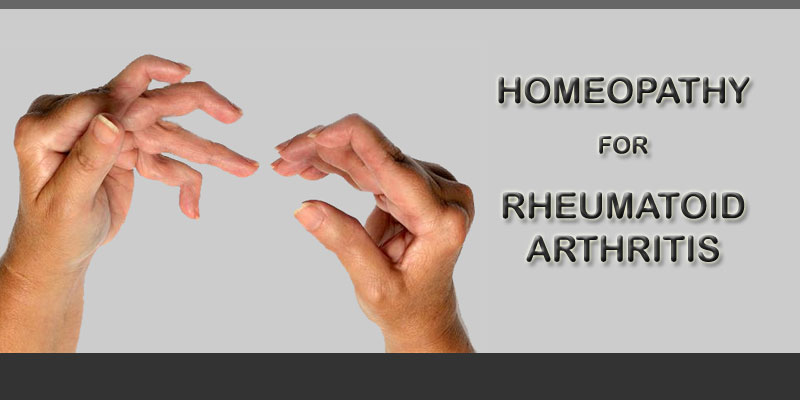
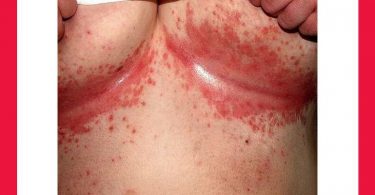

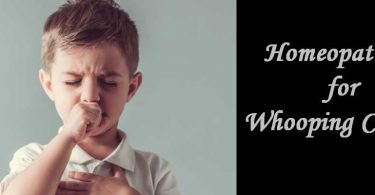

thanks